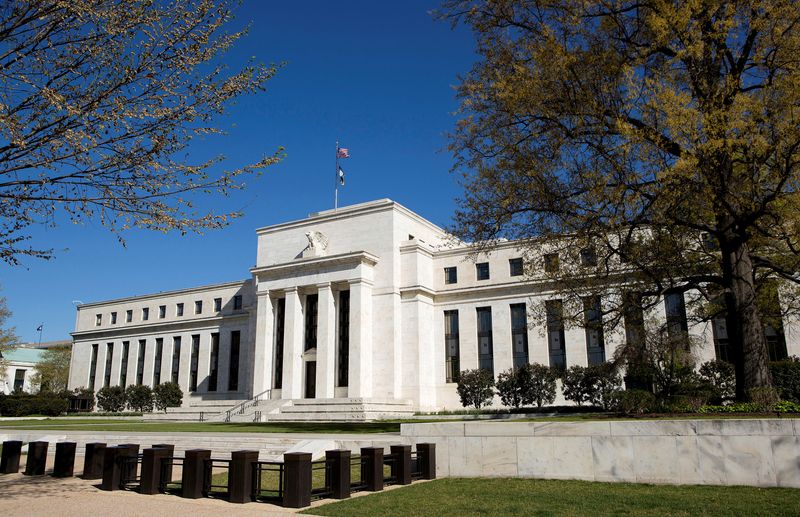Who is Kevin Hassett? Wolfe looks at the Trump ally tipped to become Fed Chair.
(Reuters) -The week ahead is rammed with rate setting meetings by heavyweight central banks from the U.S. Fed to the Bank of England, from Switzerland and Norway to Mexico.
But one question is dominating markets - will the Bank of Japan finally gear up to exit negative rates?
Here is your week-ahead look at global markets from Rae Wee in Singapore, Lewis Krauskopf in New York and Dhara Ranasinghe, Bill Schomberg and Karin Strohecker in London.
1/WILL THEY, WON'T THEY?
The two-day monetary policy meeting of Japan's central bank beginning Monday could - at long last - very well be 'live', after months of false alarms and eager anticipation.
The stars are finally aligning for a move away from negative interest rates and an overhaul of its massive stimulus programme, following Japan Inc's hefty pay bumps at this year's annual wage negotiations.
Recent comments from BOJ officials, including Governor Kazuo Ueda, also seem to signal an imminent end to years of ultra-loose monetary policy, even if it doesn't happen in March.
Markets are priced for an exit by June. Investors have positioned to benefit from selling of short-dated paper since a rise in central bank deposit rates would quickly draw banks' capital out of bonds and into cash. But it's a guessing game, and only time will tell.
2/TIMING THE REBOUND
Wednesday's Fed meeting is all about gauging policymakers' views on the timing of rate cuts, the resilience of the U.S. economy and the possibility of an inflationary rebound.
Robust jobs and inflation data has prompted a rethink of how much policymakers will lower rates this year. Fed funds futures price in around 80 basis points of cuts from more than 150 priced in in January.
That hasn’t stopped a rally that’s taken the S&P 500 to fresh records this year. A hawkish Powell tilt, however, could give investors pause.
Also on the radar is chipmaker Nvidia’s GTC developer conference from March 18-21, featuring a keynote speech from Chief Executive Jensen Huang. The AI-fuelled frenzy has boosted Nvidia’s stock nearly 80% year-to-date.
3/PLAYING FOR TIME
The Bank of England will likely play for time in Thursday's rate announcement as it awaits greater clarity on wage growth, which remains stronger than in the U.S. or the euro zone.
The BoE is expected to start cutting borrowing costs from 5.25% - the highest since 2008 - in August, a Reuters poll showed, potentially bringing up the rear, behind both the Fed and the European Central Bank.
Markets will watch for any change in language about putting the BoE's Bank Rate "under review" and any shift in the balance of votes after February's three-ways split. And Wednesday's inflation reading could cause a last-minute rethink.
Meanwhile in Switzerland, inflation easing to a nearly 2-1/2 year low has fuelled expectations that the Swiss National Bank could cut interest rates on Thursday.
4/GREEN SHOOTS
In contrast to U.S. exceptionalism, economic growth is sluggish in many other major economies.
Some economists say there's too much pessimism around Europe, which was harder hit than some peers by the energy shock - and so slower to rebound. That means European shares, even if they are near record highs, are too heavily discounted.
The flash PMI or business activity numbers, released by economies across the globe in coming days, could confirm the view that the global economy outside the U.S. is not as bad as it might first seem.
While the February euro zone composite PMI remained below the 50 mark that separates expansions from contraction, the index came in above market consensus. Britain's manufacturing PMI, stuck below the 50 threshold for growth since August 2022, is now edging higher.
5/ GOING EASY
Mexico's central bank has been a rare - and sizeable - holdout among Latin America's central banks, which have been at the forefront of the emerging market rate-cutting frenzy. But that might well change on Thursday.
Easing inflation and a strong economy thanks to higher-than-expected domestic spending in an election year have given Banxico some room for manoeuvre to pull away from record high 11.25% rates.
In Turkey, a fresh inflation spurt has dashed policymakers' hopes that the recent severe tightening cycle aimed at shoring up the ever-sliding lira and combating sticky price pressures had come to an end. Expectations are high that the central bank needs to deliver another rate hike, maybe as much as 500 basis points. That would come at a sensitive time, with the country gearing up for local elections on March 31.
(Graphics by Sumanta Sen, Vineet Sachdev, Prinz Magtulis, Riddhima Talwani, Compiled by Karin Strohecker, editing by Nick Macfie)
